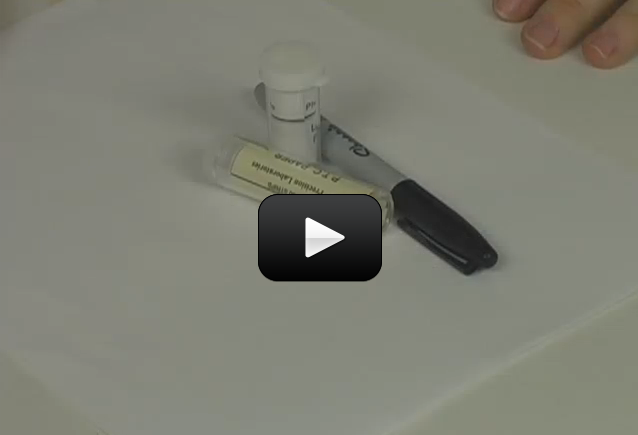We have done some extensive experiments on taste buds: how they are categorized, what tastes they recognize, and we have even mapped their location on your tongue. But we haven’t yet mentioned this fact: not all people can taste the same flavors!
So today we will check to see if you have a dominant or recessive gene for a distinct genetic characteristic. We’ll do this by testing your reaction to the taste of a chemical called phenylthiocarbamide (or PTC, for short). The interesting thing about PTC is that some people can taste it – and generally have a very adverse reaction. However, some people can’t taste it at all.
[am4show have=’p8;p9;p11;p38;p92;p29;p56;p81;p87;’ guest_error=’Guest error message’ user_error=’User error message’ ]
Here’s what you need
- 1 vial of PTC paper
- family members
Download Student Worksheet & Exercises
Here’s what you do
- Put the PTC paper in your mouth. If you have the dominant gene, it will usually taste pretty bitter. It might also be sour or even a little sweet. If it tastes like a piece of paper, you have a recessive gene.
- After testing your paper, be sure to note whether you are a taster or non-taster.
- Now test at least five more people in your family and note their reactions as tasters or non-tasters. Also note their relationship to you.
- If you have enough PTC paper, make a genetic tree of your responses. Put Mom and Dad at the center and list you and your siblings branching out beneath them. Then list both sets of grandparents above each of your parents. Circle the names of family members who test positive and leave the negative testers uncircled.
What’s going on?
The gene that determines whether or not you can taste PTC is a part of your DNA (deoxyribonucleic acid). It is the genetic blueprint that you were born with and it determines everything about you: from hair color to the size of your feet. But DNA also plays an important role in how your five senses function. Colorblindness is a genetic deficiency in which a person cannot see colors has a difficult time with distinguishing them. It can range in severity. Some people who are colorblind can’t tell the difference between colors like red and green, but some see no colors at all. Everything looks like a black and white movie to them. Just like colorblindness, our taste sensitivity can vary. Maybe this explains why some people like liver and brussel sprouts and others can’t stand them!
So to relate this to our test, the ability to taste PTC comes from a gene. We know that if both of your parents can taste it, there is a high likelihood that you will be able to taste it, too. About 70%, or 7 out of 10, people can taste it. But what does it mean? In truth, not a lot. It doesn’t mean you have a highly developed palate or a better sense of taste. It just means you are lucky enough to have inherited a gene that allows you to taste a disgusting, bitter chemical on a piece of paper. Congratulations!
Exercises
- What are the tiny hair-like organelles that send taste messages to your brain called?
- What are the bumps on your tongue called?
- What kind of trait does this experiment test?
[/am4show]


Try Home Training Tools:
https://www.homesciencetools.com/product/p-t-c-test-paper-100-vial/
Where can I get PTC paper? Having trouble finding it online…